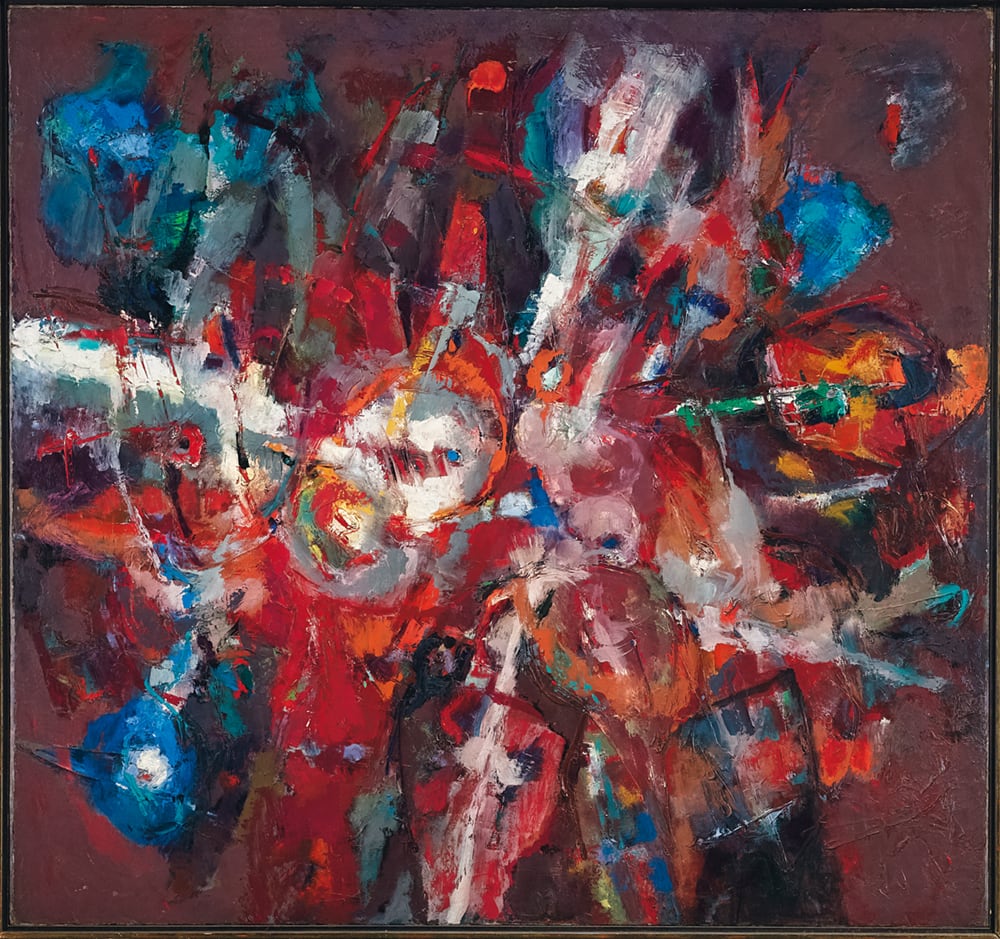
Fuoco che si spegne, 1957/58
Renato Birolli (1906–1959, I)
| Medium: | Oil on Canvas |
| Dimensions: | 113.2 x 121 cm |
about the work
In addition to Emilio Vedova and Giuseppe Santomaso, Renato Birolli was also considered among the most important and celebrated Italian artists after World War II. Immediately after studying art at the Accademia di Belle Arti in Verona, Birolli moved to Milan in 1928. In 1937, he was one of the co-founders of the Corrente group of artists, which was active in its role as part of the Italian resistance to fascism. Similarly, Birolli was involved in establishing the Nuova Secessione Artistica, later known as the Fronte Nuovo delle Arti. These groups were not formed driven by specific programmes but what counted here was rather a spiritual affinity with artistic creation. In 1952, along with seven other artists, he founded the Gruppo degli Otto (group of eight), which advocated for abstraction in art. These eight abstract painters, also including Mattia Moreni, Giuseppe Santomaso and Emilio Vedova who are also in the Reinhard Ernst collection, were not only represented regularly at the Vienna Biennale, but Birolli himself also took part in the first and posthumously the second Documenta. Furthermore, his work has been exhibited at numerous national and international solo and group exhibitions, including at the first São Paulo Biennale in 1951.
Even though Birolli’s œuvre is regarded as abstract art, it is not the abstraction itself that constitutes his creative work but his penetration of reality into the infinite and its complete transformation. He thus manages to carve out the substance of the visual material – nature, landscapes, the sea, light or fire are apparent in his works in an interweaving of shapes and colours. The example from the Reinhard Ernst collection reveals an example of all the facets of a natural phenomenon with its rich red-brown, vibrant orange, brilliant red and a light white and blue: Un fuoco che si spegne – a fire that extinguishes.